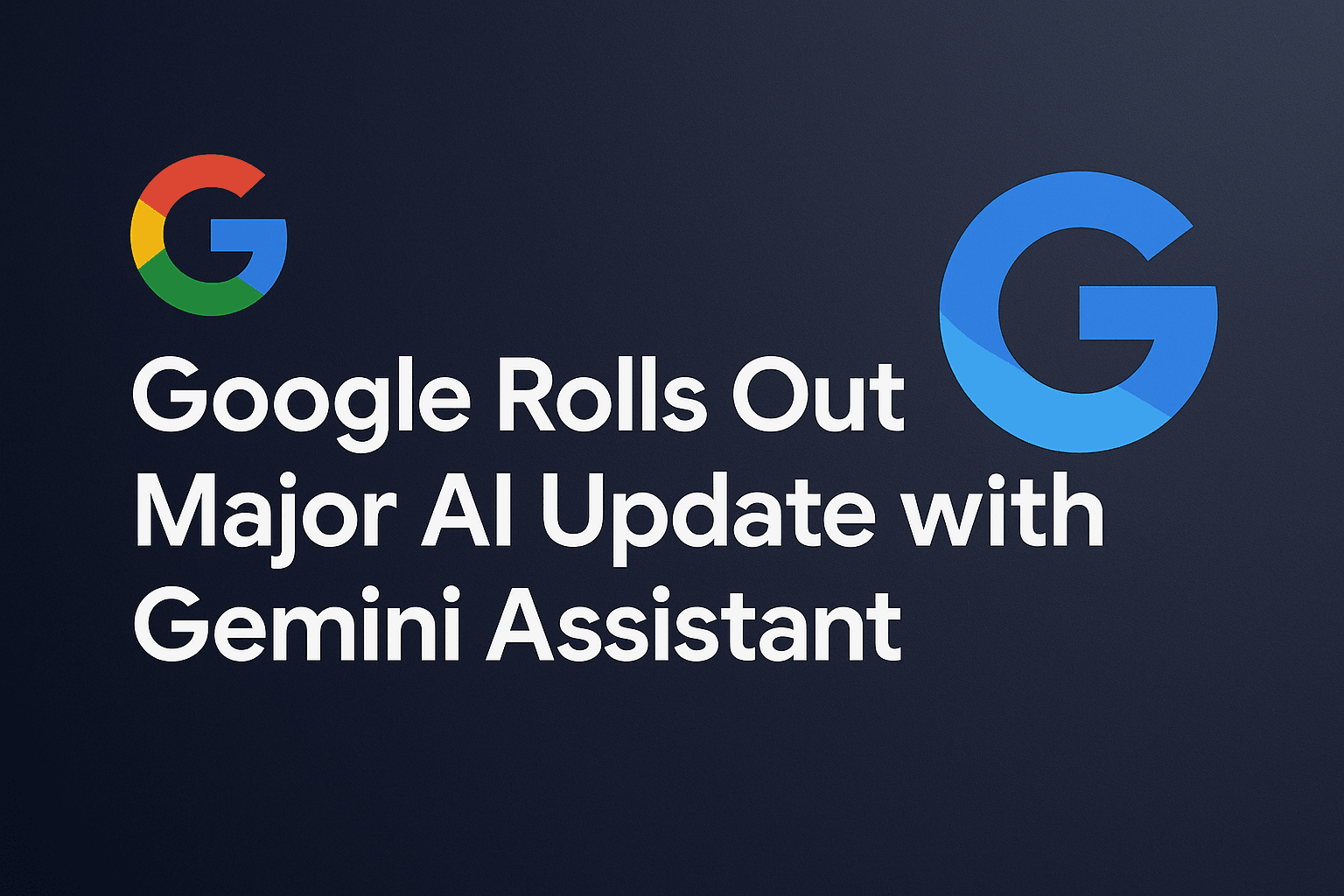Quick Summary
Gemini represents a major leap in the evolution of AI assistants. With features like real-time visual assistance through Gemini Live, the powerful Gemini 2.5 models, and the proactive Project Mariner, Gemini is designed to anticipate user needs and provide more personalized support. Its seamless integration across devices, along with new tools for developers and enterprises, sets Gemini apart as an advanced AI assistant that can handle everything from daily tasks to complex professional challenges. As Google continues to evolve Gemini, it will likely become a central part of users’ digital lives, offering enhanced productivity, smarter workflows, and more immersive experiences.
1. Introduction to Gemini
Gemini is Google’s new advanced AI assistant, developed by Google DeepMind, and is designed to push the boundaries of what AI can achieve in both everyday use and complex tasks. Unlike its predecessor, Google Assistant, Gemini offers a range of capabilities aimed at providing a more intelligent, intuitive, and proactive experience. By incorporating cutting-edge AI models and an enhanced user interface, Gemini promises to integrate more deeply into our lives, making interactions more fluid, natural, and efficient. Initially introduced at Google I/O 2025, Gemini is poised to redefine the role of AI assistants in both personal and professional settings.
2. Key Features of Gemini
2.1. Gemini Live
Gemini Live is one of the flagship features of this new AI assistant. By leveraging a smartphone’s camera feed or screen share, Gemini Live can identify objects, troubleshoot problems, and provide real-time, contextual information to help users with their immediate needs. Whether you’re looking to identify a product in a store, asking for assistance with home repairs, or seeking cooking advice, Gemini Live helps you solve problems on the spot. This integration allows for a more dynamic and interactive user experience, bridging the gap between AI and visual input. With seamless integration across both Android and iOS devices, Gemini Live is an all-in-one tool for daily tasks and problem-solving.
2.2. Enhanced AI Models: Gemini 2.5 Pro and Flash
The Gemini update introduces two powerful models designed to cater to different needs:
- Gemini 2.5 Pro: A high-performance model aimed at users who need to tackle complex and nuanced tasks. This includes deep research, problem-solving, coding, and data analysis. The introduction of “Deep Think” mode enhances its ability to reason through difficult problems, making it one of the most advanced AI assistants on the market.
- Gemini 2.5 Flash: Optimized for speed, this model ensures that Gemini remains responsive, making it ideal for everyday tasks such as setting reminders, looking up quick information, or interacting with smart home devices. Its efficiency and quick processing power make it the go-to option for rapid responses.
Both models give users flexibility and ensure that Gemini can handle everything from simple tasks to more demanding workloads.
2.3. Multimodal Integration
Gemini’s integration of text, voice, and visual inputs makes it an incredibly versatile tool. Whether users are speaking a command, typing a request, or uploading an image, Gemini processes all types of input and responds accordingly. This multimodal feature enables more natural conversations with the assistant, allowing it to handle different types of queries simultaneously. This advancement means that users can ask Gemini to search the web for information, show relevant pictures, and even explain complex topics in simple terms—all in a single interaction.
2.4. Project Mariner
Project Mariner is another groundbreaking feature of Gemini that adds a proactive layer to the assistant. Unlike traditional assistants that react to explicit commands, Gemini anticipates user needs by learning from past interactions and making suggestions before they are even asked. This includes automatically setting reminders, offering daily summaries, and even helping to organize tasks across multiple devices. For example, if Gemini detects that a user frequently makes certain calls or writes certain emails at a specific time, it can offer to do it for them, freeing up time and making their workflow more efficient.
3. Integration Across Devices
One of the most significant improvements in Gemini is its deep integration across a variety of devices. Whether you are on your phone, laptop, tablet, or a smart home device, Gemini provides a consistent experience.
- Smartphones (Android and iOS): Gemini is compatible with both Android and iOS devices, making it accessible to a large user base. The seamless integration ensures that users can access Gemini’s capabilities on-the-go, whether it’s using Gemini Live, setting reminders, or managing calendar events.
- Smart Home Devices: As part of its integration with Google’s ecosystem, Gemini extends its functionality to smart home devices. With the updated Home APIs, users can interact with their smart thermostats, lighting systems, security cameras, and more. Gemini’s ability to provide visual analytics and make real-time adjustments gives users a powerful tool to manage their connected home effortlessly.
- Wearables and Smart Glasses: As wearables continue to grow in popularity, Gemini is also expanding its functionality to include augmented reality devices like Android XR smart glasses. This integration allows users to receive hands-free guidance, directions, and even live translations, all through their wearable devices. The power of AI, combined with AR, creates an immersive experience that enhances productivity, particularly in fields like healthcare, education, and manufacturing.
- Web Browsing: Integration with Chrome brings Gemini into the web browsing experience, allowing users to ask for summaries, definitions, or even generate new content while browsing. Whether you’re researching a topic or browsing social media, Gemini will offer context, research suggestions, and even execute tasks directly within your browser.
4. Developer Tools and Enterprise Solutions
For developers, Gemini is a game-changer. Google has introduced several tools designed to leverage the power of AI in various domains. Gemini Code Assist is a powerful tool that helps developers by providing real-time coding suggestions, offering solutions to common coding challenges, and even generating complex snippets of code. With this tool, Gemini essentially serves as a pair of AI-powered coding assistants, boosting productivity and reducing the time spent debugging.
NotebookLM is another tool designed for research professionals. By synthesizing large amounts of data from various sources, NotebookLM helps users organize and summarize findings efficiently, reducing time spent manually sorting through information. This is an invaluable tool for students, researchers, and anyone who needs to process and analyze large datasets.
Google Vids is a new application that helps users create professional-quality videos using Gemini’s AI capabilities. Whether for business presentations or personal use, users can create videos with the help of the assistant, improving productivity and streamlining content creation.
5. Subscription Plans
Google has introduced a tiered pricing structure to cater to different user needs.
- AI Pro: For $20 per month, users get access to the powerful Gemini 2.5 Pro model, as well as additional features and higher limits on requests. This plan is ideal for users who require advanced AI for tasks like coding, data analysis, and creative work.
- AI Ultra: This premium plan costs $250 per month and provides users with the highest processing power, priority access to new features, and exclusive tools. It’s designed for power users, enterprise clients, and developers who need the most robust AI capabilities.
6. Future Prospects
Google is continuously evolving Gemini, and future developments look even more promising. Upcoming features include:
- Expanded Multimodal Support: Google plans to add even more input options, including gesture recognition and haptic feedback. This would allow for more immersive and intuitive interactions with Gemini, especially in environments where voice or touch input might not be ideal.
- Increased Proactivity: As Project Mariner develops, Gemini will become even more proactive, anticipating not just routine tasks but also adjusting to a user’s evolving needs. Over time, Gemini will become more capable of managing complex workflows and providing tailored support across devices.
- Broader Device Integration: Google intends to expand Gemini’s reach even further, bringing it to a wide array of devices, from third-party smart home products to automotive systems, ensuring a fully integrated AI experience.
Conclusion
Google’s rollout of the Gemini assistant marks a significant milestone in the evolution of AI technology. With its advanced reasoning capabilities, multimodal integration, and proactive features, Gemini sets a new standard for AI assistants, offering users a smarter, more efficient, and seamless experience across a range of devices. From real-time visual assistance through Gemini Live to the robust Gemini 2.5 models that cater to both everyday tasks and complex problem-solving, Gemini is designed to simplify and enhance both personal and professional workflows.
The assistant’s integration into various platforms—whether smartphones, smart home devices, wearables, or web browsers—ensures that Gemini is always accessible, providing valuable assistance no matter where you are or what device you’re using. For developers and enterprises, Gemini offers powerful tools like Gemini Code Assist and NotebookLM, which elevate productivity and streamline processes.
Looking ahead, Google’s vision for Gemini is clear—continuous improvement and expansion across more devices, input methods, and proactive features. As it evolves, Gemini is poised to become an integral part of our digital lives, transforming how we interact with technology and setting the stage for even more advanced AI-driven experiences. With its ability to anticipate needs, offer tailored solutions, and seamlessly integrate into daily tasks, Gemini is not just an assistant; it is a game-changer in the world of AI.


